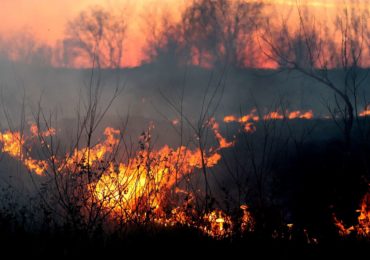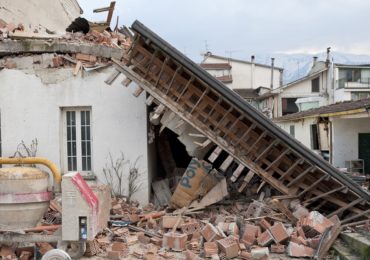Development and disaster resilience – an urban planning challenge!
Vulnerability and exposure to disasters is increasing as more people and assets locate in areas of high risk. Since 1970, the world’s population has grown by 87 per cent. During the same time, the proportion of people living in flood-prone river basins increased by 114 per cent and on cyclone-exposed coastlines by 192 per cent. More than half of the world’s large cities, with populations ranging from 2 to 15 million, are located in areas of high earthquake risk. In addition to disaster vulnerability, the main drivers of risk are poorly planned and managed urbanization, environmental degradation, poverty and weak governance. Disaster vulnerability is reduced as a direct product of sound development. (United Nation International Strategy for Disaster Reduction,2015).
Related: What makes a city great?
It is of very important to realize the importance and crucial role of disaster management, resilience and knowing the risks and vulnerabilities in order to bring down the impact of disasters in this rapidly changing urban environment. It can not only prevent the loss of lives, but also the huge economic loss which is a result of breakdown of the finest infrastructure (housing, roadways, physical and social infrastructure etc.) which took many years to be built. The relationship between disasters and development is indeed very intense. Whilst there is universal acceptance that disasters can damage, erode and destroy development gains, there is a very limited recognition of the role that different approaches to development play in creating or increasing vulnerability.

Reducing the risks of disasters (for example prevention, preparedness, mitigation and early warning systems) for predictable events like the major severe disaster such as cyclones, large storms, heavy precipitation events, earthquakes, landslide, floods, avalanches , helps to protect both human and economic assets. Level and quality of development and planning to a large extent determines the way in which hazards impact on people, structures and economies. There is growing evidence of the intensity and frequency of hazard related extreme events on cities which are not resilient. It is therefore critical that disasters be seen through the lens of reducing risk of and building resilience while planning process of a city, rather than just a response to a one-off disaster event.
Related: Smart City Concept
How urban planning can contribute to resilience and disaster risk reduction
In today’s world of rapidly changing environment, increasing urbanization and vulnerability, it is very crucial to embed the concept of resilience into the development planning of our cities in order to have a sustainable development. Planning a city without a robust resilience strategy to cope from disasters is equivalent to wasting resources and putting people, infrastructure, assets and economy at risk .Disaster resilience is thus a desired attribute which cities should possess in their urban planning and management strategies. Systems which increase and incorporate resilience, enable cities to withstand shocks from man-made and natural disasters.
Disaster resilience and management in urban areas has been a challenge for town planners. The huge loss of lives, property, economy and society can be minimized by making our cities resilient to disasters and calamities. It is very crucial to incorporate or embed resilience in planning and development of city’s infrastructure as disasters usually occur very abruptly giving no time to react or to take immediate mitigation actions, therefore resilience should be mainstreamed at the very early stages of development to make the final product strong, robust and flexible to withstand shocks and stresses. Resilient cities are able to cope with disaster situations as they are robust and prepared for any such situation beforehand only. It bounces back to normal functioning once disaster passes away. Before planning to establish a resilient city framework, we must understand the basic paradigm of disasters such as earthquakes, floods, volcanic eruptions, avalanches, landslides etc. These natural phenomenon made earth‘s atmosphere conducive for evolution of life and shaped the history of evolution of mankind and its civilizations. We face such disasters because we are setting cities dangerously close to a natural phenomenon due to rapid urbanization, and we cannot handle its impact with available resources and arrangements. A focus on disaster resilience in the process of urban planning forms a basic backbone structure for a resilient and safe city. This can be achieved by:
- Working with multiple stakeholders throughout the planning process to identify known risks, needs and potential solutions, realizing the potential of communities to contribute to risk reduction.
- Incorporating risk assessment and vulnerability studies– considering exposure, vulnerability and hazards, urban settlements development and services- in all urban development designs, master plans and development plans.
- Making safe land available for urban development, avoiding construction in disaster- prone areas, leaving buffers and providing recreational areas; risk sensitive planning.
- Ensuring that public space for streets, infrastructure and parks is identified and protected.
- Upgrading informal settlements, with attention to access roads, flood-risk, infrastructure and other safety measures.
- Allocating critical infrastructure in safe areas – Installing risk-reducing infrastructure, including access roads, drainage, solid waste management, and sewerage systems.
- Assessing how urban development contributes to improving the lives of the poorest or most vulnerable people in a city.
- Developing good information and awareness system on risk and communicating risk information widely.
- Developing plans for post-disaster reconstruction that reduces future risk.
The importance of urban planning in building resilience has many implications. First of all, urban planning allows towns, cities and settlements to be analyzed and planned as a system comprised of various sectors and institutions. This is crucial in coping with interdependencies among failures in lifeline infrastructure in disaster situations. Urban planning with integrated disaster resilience also contributes to preventing secondary disasters and delays in the rehabilitation and recovery process. Disaster risk assessment, preparedness, mitigation and planning for recovery, with multiple stakeholders involved in urban planning (like citizens, development authorities, municipalities, NGOs etc.)before a disaster, is one potential solution that can contribute to foreseeing multiple systems failures that can occur during disaster and can also help in achieving resilience.

Secondly, the planning exercise can reinforce stakeholder relationships and integration at different levels, institutional frameworks and partnerships among all urban stakeholders, particularly planners architects, engineers, disaster and risk reduction management specialists, private sector, and communities to address risk reduction and resilience in a holistic manner.
Thirdly, is important to strengthen the legal planning frameworks of risks in master plans and codes in urban areas to support resilience. Cities, towns and settlements are expanding and village settlements are becoming towns and cities. A legal framework within development plans can guide future planning and integration of disaster risk reduction.( Making Cities Resilient Report 2012 :My city is getting ready !, UNISDR. Second Edition, October 2012).
KNOWING THE RISKS: WHY IT IS IMPORTANT
Unless cities and its citizens have a clear understanding of the risks they face, planning for meaningful disaster risk reduction may be ineffective and worthless. Risk analysis and assessments are essential prerequisites for informed decision-making, prioritizing projects, planning for risk reduction measures and identifying high, medium or low-risk areas, according to their vulnerability and the cost effectiveness of potential interventions. A well-maintained database of disaster losses and a Geographic Information System (GIS) to map hazards, vulnerabilities, the exposure of people and assets and capacities will provide the foundation for the risk assessment and vulnerability analysis. Prioritized actions based on an analysis of the urban plan, land-use zoning, investment decisions and worst-case scenarios for emergency preparedness plans and exercises take place by planning. It also helps to include risk and vulnerability mapping in the land use suitability in order to plan for a resilient future development. It is very important to reach out to the common people to help them know the risks, vulnerabilities, mitigation and preparedness to minimize the loss to communities in the case of hazards, public participation in plan preparation and hazard zonation can reduce the risk of disaster very effectively. It can be done by mapping the risks and vulnerable areas, communities, critical infrastructure, make the results available through websites and other means of information, update the risk assessment, preferably annually, establish a city-wide geographic information and monitoring system ,consider creating a geographic information and monitoring system that includes input data from and is accessible to all actors, including civil society, the production sector (for example, housing, agriculture, mining, commerce and tourism) and the scientific and technical community. This not only inculcate awareness about the disaster but also make the communities aware about ways to minimize impact of disasters. It enhance their knowledge about the safe zones, mitigation measures, resilient building material to be used and other useful knowledge.
Related: Rural urban fringe: Concept, History, Reasons, Issues